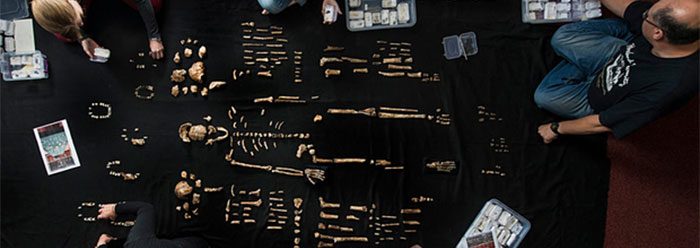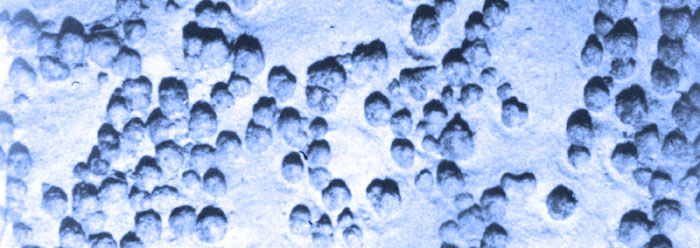Search Tools
New Defender's Study Bible Notes
15:1 gospel. This passage (I Corinthians 15:1-4) is often considered the defining verse of the gospel of Christ, by which men alone can be saved, receiving it, believing it, and standing on it. Significantly, of the 105 times where this word (Greek euaggelion) or its correlative words appear in the New Testament as presently organized, this occurrence is the middle one (52 before, 52 after).
15:3 according to the scriptures. Although the central focus of the gospel is certainly on the death and resurrection of Christ for our sins and salvation, the phrase “according to the Scriptures” is interjected twice in this passage, indicating that the other 104 Scriptures on the “gospel” are also important. The first occurrence of the word is in Matthew 4:23 (“the gospel of the kingdom”), looking forward to the coming kingdom, when Christ shall be acknowledged as King of kings. The last occurrence is in Revelation 14:6-7, where it is called “the everlasting gospel,” calling on men to worship Him as Creator of all things. Thus “the gospel” embraces the person and work of Christ in its entirety, from creation to consummation, eternity to eternity. Its foundation is the Creation; its consummation is His eternal kingdom; its centrality and power is His substitutionary death and bodily resurrection. To reject or neglect any component of this is to leave us with “another gospel: Which is not another,” but one which “would pervert the gospel of Christ” (Galatians 1:6-7). Only the true gospel of Christ is “the power of God unto salvation” (Romans 1:16).
15:4 buried. The bodily burial of Christ is included as a part of the gospel, or “good news” concerning Christ, no doubt in order to emphasize that His resurrection was a bodily resurrection. Note Romans 10:9.
15:6 five hundred brethren. The remarkable parade of eye-witnesses of the resurrected Christ, most of whom were still living when Paul wrote and could have denied the story if it were not true, is part of the overwhelming body of evidence (“many infallible proofs”—Acts 1:3) that makes this greatest event in history since the creation probably the most certain fact of history. Jesus Christ has, indeed, conquered death itself, thereby demonstrating that He was the Creator of life and the only possible Savior from sin and death.
15:10 yet not I. This striking phrase “yet not I” occurs just two other times, in I Corinthians 7:10 and Galatians 2:20. In all three occasions, Paul—arguably the greatest Christian of all—instead of boasting, reminded his readers that anything He had accomplished was altogether by the grace of God.
15:14 faith is also vain. There is no true Christian faith without the resurrection, and thus no hope of forgiveness, or salvation, or eternal life. We are still lost in sins (I Corinthians 15:17), and we shall never see our departed loved ones again (I Corinthians 15:18). Having seen the hopelessness of this life, if that is all there is, more clearly than others, we are the “most miserable” of all men (I Corinthians 15:19). But Christ has defeated death, our sins are forgiven, those asleep in Christ are awaiting us, and we also shall be resurrected to eternal life, so therefore, of all men, we are most blessed.
15:20 now is Christ risen. For a summary of the compelling evidences of the bodily resurrection of Christ, see Appendix 16.
15:21 by man came death. There was, therefore, no death before man. See Romans 5:12. This one verse (as well as the coherent teaching of all Scripture) disproves the false teaching that there were long ages before man, as supposedly identified by the fossil remains of organisms living in those ages. The fossil record, containing the remains of billions of now-dead animals and man-like creatures, cannot be the record of long ages of evolution. It is rather the record of one age of cataclysmic death, at the time of the great Flood, when “the world that then was, being overflowed with water, perished” (II Peter 3:6) and “all that was in the dry land, died” (Genesis 7:22). Not only is this the explicit teaching of Scripture, it is also implicitly taught by the fact that nowhere in the Bible is there the slightest hint of the death of sentient life, either human or animal, before Adam’s sin brought God’s curse of decay and death on man’s dominion, “the whole creation” (Romans 8:20-22). It is further supported by geological evidence everywhere in the crust of the earth.
15:22 in Adam all die. Adam was certainly a real individual man, just as real as Jesus Christ. Since he was the first man, all of us were implicitly “in Adam,” and therefore we have all (except Christ) inherited his sin-nature.
15:25 under his feet. This ultimate triumph, coming after His seeming defeat on the cross, was implied in the promise of Genesis 3:15, and amplified in the Psalms (2:2,9; 8:2,6; 22:1-18,28; 118:22; and others, most explicitly in 110:1-2).
15:26 The last enemy. The last enemy to be destroyed will be the first enemy who rebelled against God in the beginning and who has been deceiving the world with his lies ever since. Satan, who now has “the power of death” (Hebrews 2:14) will finally be incarcerated forever in the lake of fire (Revelation 20:10).
15:29 baptized for the dead. This is the only reference in the Bible to anyone being “baptized for the dead,” and has obviously become a very controversial verse, with many suggested interpretations. It could not mean that a dead unbeliever could somehow be saved by proxy baptism, for baptism does not save even living believers. It could not even save unbaptized believers, for they were already saved by grace through faith alone, whether or not they were baptized (Ephesians 2:8-9; Luke 23:43). This vicarious baptism for the dead could not have saved anyone, yet Paul seems to have mentioned it with approval, or at least not with disapproval, merely pointing out that it was meaningless if there were no future resurrection of the dead. But this might imply that he thought it was meaningful in light of the certain future resurrection. Since neither he nor any other New Testament writer mentions this practice anywhere else, and since it is not practiced today (except by certain cults), it remains somewhat enigmatic as to purpose and value, and no expositor should be dogmatic. The difficulty probably has to do with the precise intent of the preposition huper, here translated “for.” This word can be translated in various ways, depending on context. The context here is dealing with the future resurrection, and immersion in water beautifully symbolizes death and resurrection, both that of Christ and of the believer being baptized (see on Romans 6:3-5). There would certainly be no point in submitting to the inconvenience of immersion if the events it symbolized were non-existent. It merely would increase one’s jeopardy of persecution and earlier death (I Corinthians 15:30), all to no avail if there were no resurrection. A possible translation, therefore, could be “baptism with respect [only] to the dead.” That is, such baptism might depict one’s future death, but not his future resurrection, if there were no such thing. It would only be a baptism for the dead, not one showing both death and resurrection.
15:32 fought with beasts. This is quoted from Isaiah 22:13. With respect to Paul’s encounter with beasts at Ephesus, there is no mention of this either in the book of Acts or in Paul’s list of his travails in II Corinthians 11:23-33. Possibly he was referring to the mob acting like beasts at the uproar in Ephesus (Acts 19:28-34).
15:33 evil communications. This might be paraphrased as a warning that false doctrine inevitably leads to wicked behavior. Denying a future accounting to God (implicit in denying the resurrection) leads to the philosophy of fatalistic eating, drinking and merry-making. Denying creation in favor of animalistic evolution leads to animalistic conduct, and so on.
15:38 his own body. This statement is both a refutation of evolution and a confirmation of the Genesis revelation that each kind of plant was only to reproduce “after his kind” (Genesis 1:11-12). God has designed each kind and has implanted a unique genetic code in each DNA molecule that controls the reproduction process, and assures that each kind will reproduce after no other kind. See also James 3:12.
15:39 another of birds. Not only the plants but also the animals reproduce after their own kind. There is not continuity of all forms of animal and human life; as evolutionary theory supposes. This revelation is firmly supported by the distinct genetic gaps between different kinds of animals, and by the ubiquitous gaps between those same kinds in the fossil record.
15:40 terrestrial is another. This strong distinction between the earth, the planets, the moon and the sun is also firmly verified by modern astronomical discoveries. The chemical and physical structures of the earth and the other planets, as well as the moon, are vastly different from each other, and the same is true of all their many satellites. It seems completely impossible that they could all have evolved out of the same dust cloud about five billion years ago, as evolutionists contend.
15:41 one star differeth from another. Here is still another modern scientific confirmation of Biblical revelation. All stars look alike to the naked eye; even seen through a telescope, they seem to be just points of light. However, analysis of their light spectra reveals that each of them is uniquely different from all others. Each has its own distinctive ratio of apparent brightness to temperature, so each is different “in glory” from all others.
15:42 incorruption. The Greek word translated “incorruption” is aphtharsia. It is translated “immortality” in II Timothy 1:10. Another word, athanasia, is rendered as “immortality” in I Corinthians 15:53-54. The new bodies which believers will receive at the resurrection will thus be both “without corruption” and “without death.” Note that these both apply to the spiritual body (I Corinthians 15:44). Both pagans and New Agers believe in the “immortality of the soul,” either in an eternally disembodied state or in reincarnation in another body. The Scriptures, however, clearly teach the resurrection of the dead (I Corinthians 15:42, I Thessalonians 4:16-17).
15:43 sown in dishonour. In I Corinthians 15:35-45, death and resurrection are compared to seed-sowing and harvest. When a seed is planted in the ground, it is as though it had died and was being buried. For a long time after its death, the seed cannot be seen, but finally it rises again as a beautiful sheaf of grain. Jesus made the same analogy: “Except a corn of wheat fall into the ground and die, it abideth alone: but if it die, it bringeth forth much fruit” (John 12:24; note also Mark 4:26-29). The human body, because of sin and the curse, eventually dies and is buried, but one day (like the planted seed) it will appear again. The same basic body, now immortal and glorified, its only real inhabitant, its eternal created spirit has been born again in Christ.
15:44 raised a spiritual body. The spiritual body rising from the dead will no longer be under bondage to gravitational and electromagnetic forces, as at present, but only to spiritual forces of which we now have no real knowledge. We do know, however, that our spiritual bodies will be like that of the resurrected body of Christ (Philippians 3:20-21; I John 3:2), able to move through solid walls (John 20:26), and move with tremendous speed between earth and God’s throne in heaven (John 20:17-19).
15:45 it is written. Paul here quotes Genesis 2:7, again confirming the historicity of the special creation of Adam and, therefore, of the Genesis record of creation as a whole.
15:45 first man Adam. This is a clear affirmation that Adam was, indeed, the first man, thus refuting the various quasi-evolutionary theories involving pre-Adamite men.”
15:45 the last Adam. The “last Adam,” of course, was the Lord Jesus. As in Romans 5:12-19, the divinely inspired apostle showed Adam to be a contrasting type of Christ. Both were true men, yet their bodies were formed directly by God without genetic inheritance from human parents. Adam was the first man made a living soul, the federal head of the human race; the Lord Jesus was the first begotten from the dead, the captain of our salvation, the first man made a life-giving spirit. Adam brought sin and death into the world; Christ brought everlasting righteousness and eternal life.
15:47 the second man. Jesus Christ was certainly not “the second man” in the natural sense—that would be Cain! Neither was he the second man born supernaturally; there were Isaac and Samuel and John the Baptist, for example. The phrase obviously is comparing Him with Adam as “the first man,” but Adam was not born at all—he was formed directly by God (Genesis 2:7). In fact, that is the key. The body of Jesus was also directly formed by God, in Mary’s womb (see notes on Genesis 2:7; Jeremiah 31:22; Romans 1:3; Galatians 4:4 and Hebrews 10:5), and this was the second and last man of whom this was true.
15:49 image of the heavenly. One of the greatest promises of God is that those who believe in Christ will one day “be conformed to the image” of the Son of God. See notes on Romans 8:29; Philippians 3:21; I John 3:2.
15:51 a mystery. This “mystery,” not revealed in previous ages, assures us that Christ’s second coming will be initiated by simultaneous resurrection and glorification of the dead in Christ and glorification of the bodies of those still living at the time. Note that all will be raised! There is no basis for the so-called “partial rapture” theory. This same mystery had been unveiled previously to the Thessalonian believers (I Thessalonians 4:13-17), but his epistle to that church did not include the more detailed specifications for the spiritual body as described here. That body would be immortal (that is, no longer subject to death) and incorruptible (that is, no longer subject even to decay, pain, disease, or other physical effects of the curse). Paul would soon point out essentially this same truth to the churches at Philippi (Philippians 3:20-21) and Colosse (Colossians 3:4). In none of these is there any instruction to look first for the Antichrist, or the great tribulation, or for anything except Christ Himself!
15:52 In a moment. “Moment” is the Greek atomos, believed at that time to be the very smallest particle of matter. The coming of Christ is to be very sudden, and without advance notice, so that we should be “abiding in Him” at all times. See I John 2:28; Hebrews 9:28; II Timothy 4:8.
15:52 the last trump. Paul is not referring to the last of the seven trumpets in the Apocalypse (Revelation 8:2; 11:15), for the book of Revelation had not yet been written and Paul obviously intended for the Corinthians to understand what he meant. The sounding of an angelic trumpet at the resurrection day had also been mentioned in I Thessalonians 4:16. Trumpets were traditionally associated with calls to action (e.g., I Corinthians 14:8; Judges 7:20), and this particular trumpet sounded in heaven will call all saints, living and dead, to ascend into heaven to meet the returning Christ. It is, therefore, “the last trump” of this present age of the church.
15:53 put on incorruption. At present, the whole creation is in “the bondage of corruption” (Romans 8:21), and this certainly includes our mortal bodies. Scientifically, this condition is known as the law of increasing entropy, theologically as the curse on the ground (Genesis 3:17) because of sin. This law will be set aside as far as our present bodies are concerned, at this first phase of Christ’s second coming, then finally repealed in entirety at the final phase (Revelation 22:3).
15:54 saying that is written. See Isaiah 25:8, supplemented by Hosea 13:14. In I Corinthians 15:55, “death” and “grave” are the same Greek word, thanatos.
15:58 not in vain. No matter how great the temptation to compromise, do not yield! No matter how demanding and difficult may be the work to which God has called us, do not quit! There will be a day of resting and reward, but not yet! Note Hebrews 4:9,11; 6:10.














